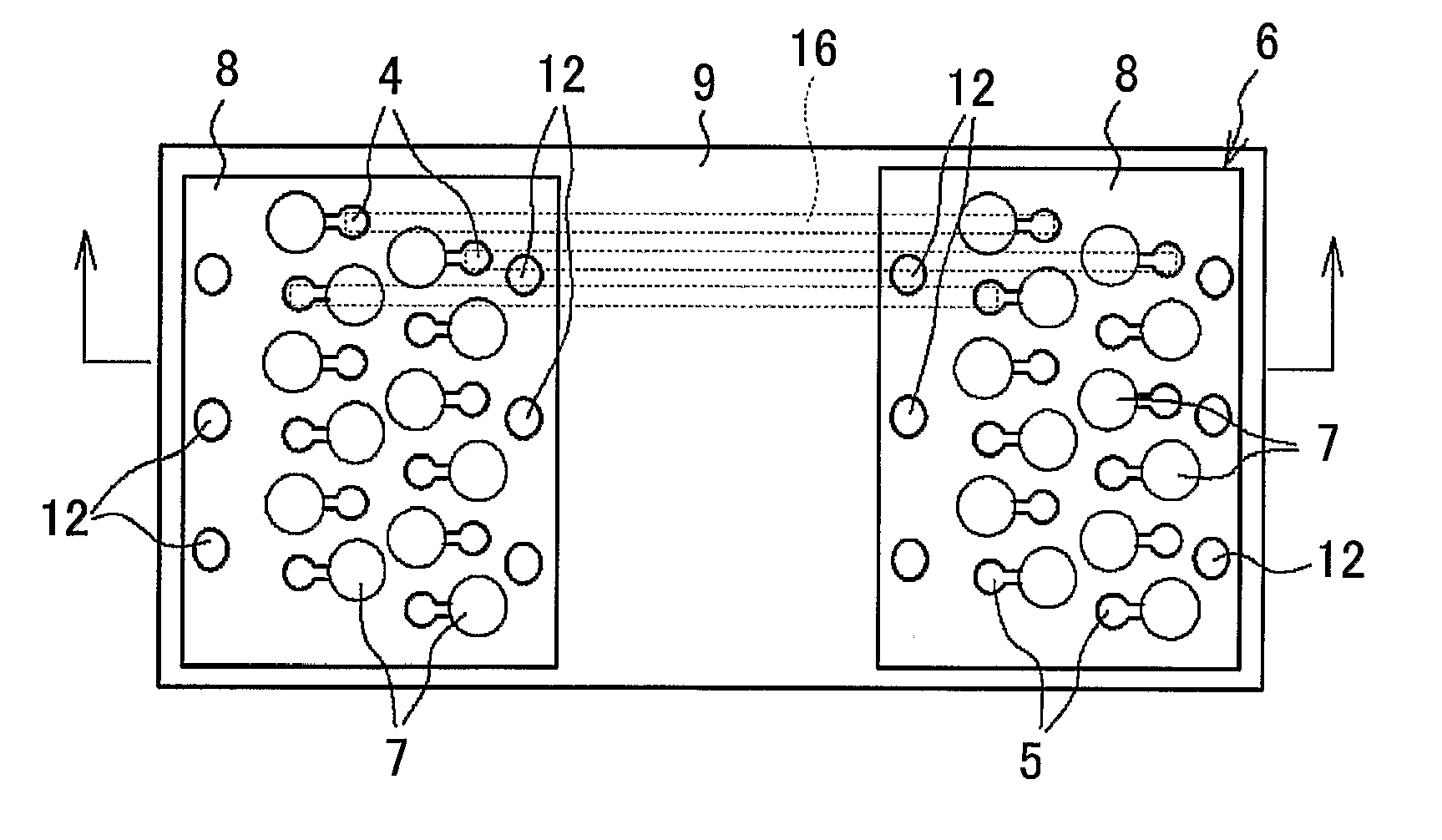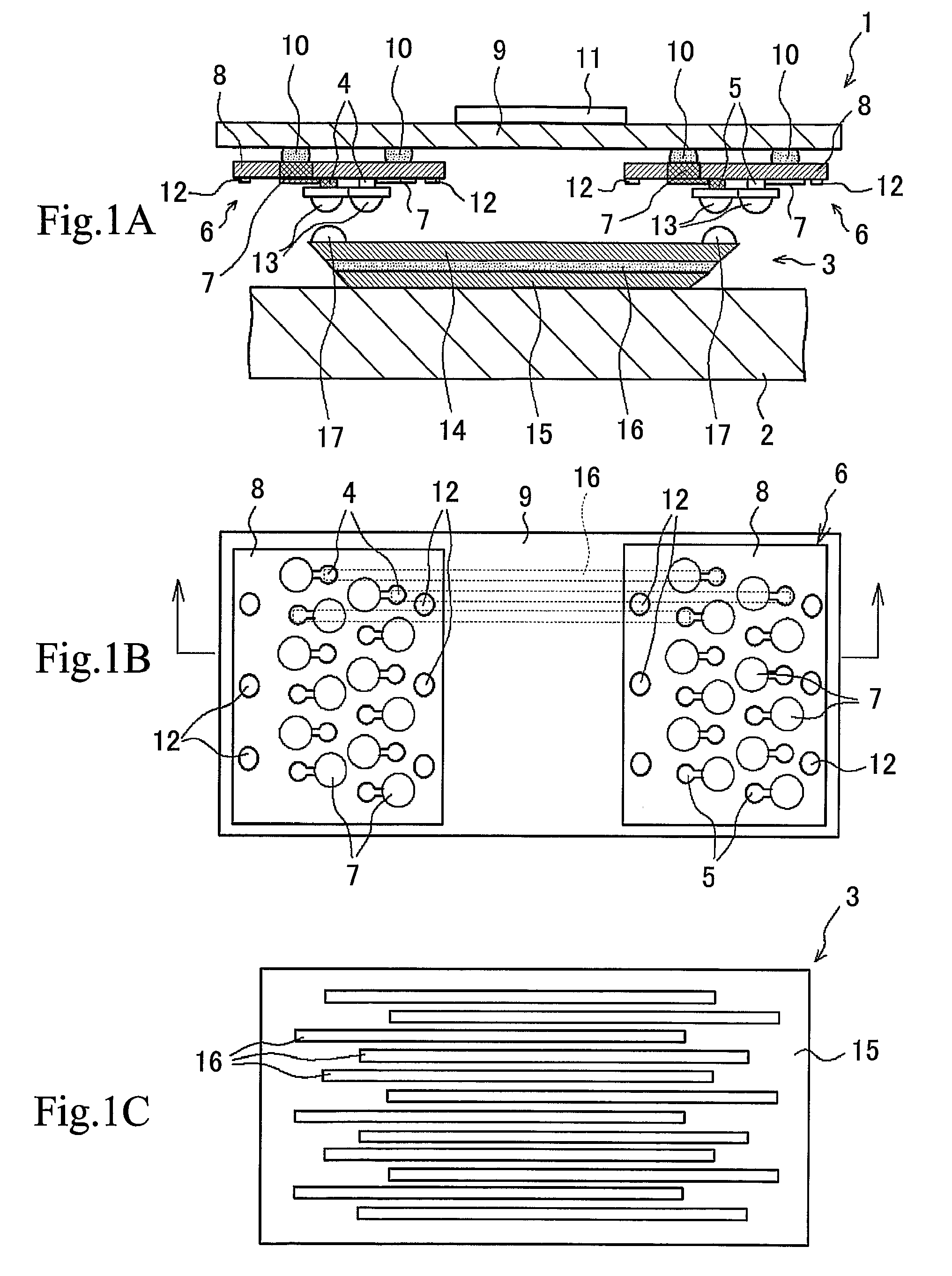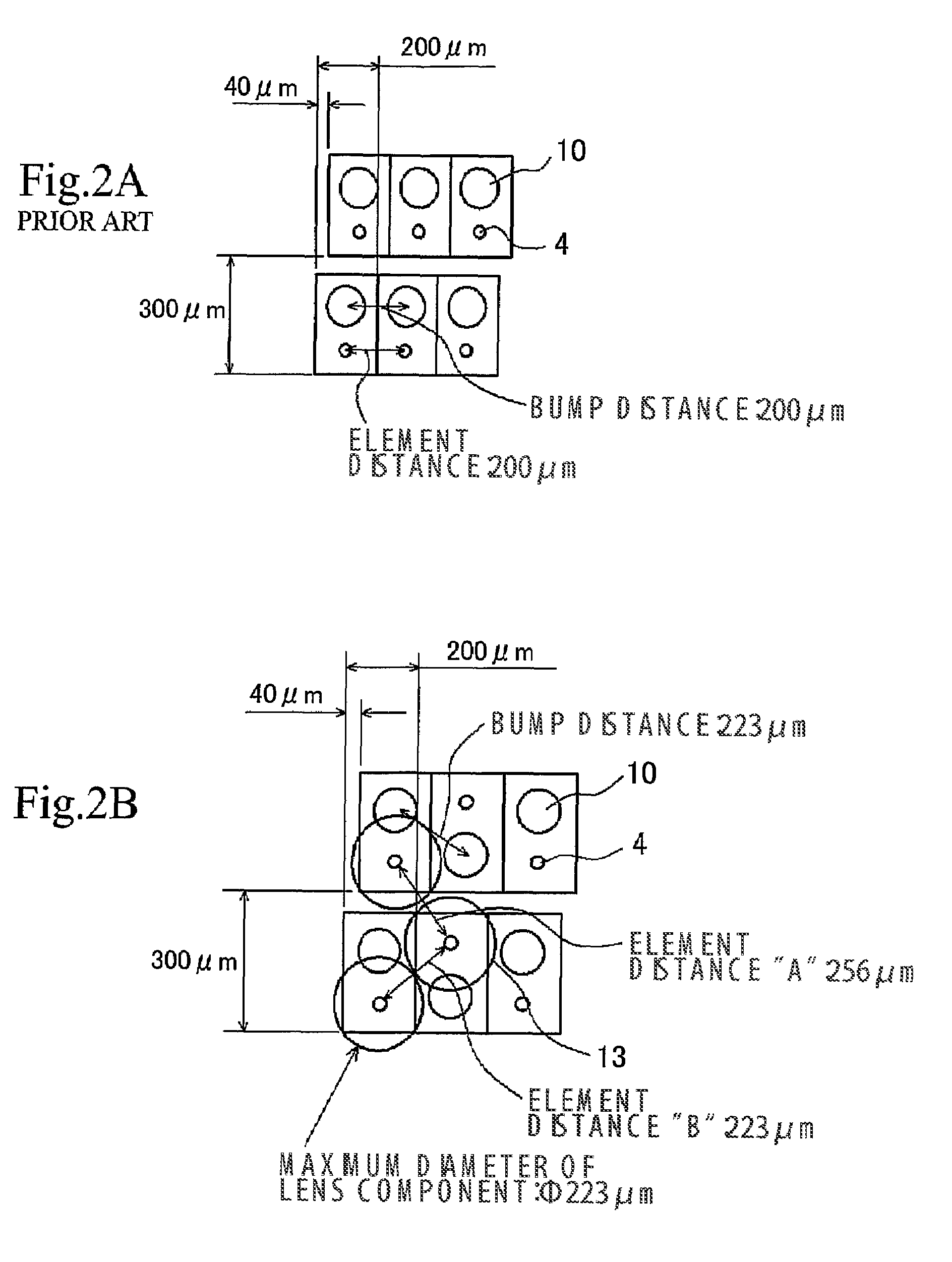Photo-electric conversion apparatus with alternating photoelectric conversion elements
a technology of photoelectric conversion elements and conversion apparatus, which is applied in the field of photoelectric conversion element array, can solve the problems of optical waveguide, inability to adopt the method to mass production, and difficulty in further raising the density of the array of core layers, so as to achieve sufficient distance, avoid optical and electrical interference and crosstalk effectively, and facilitate the effect of mounting
- Summary
- Abstract
- Description
- Claims
- Application Information
AI Technical Summary
Benefits of technology
Problems solved by technology
Method used
Image
Examples
first embodiment
[0039]FIG. 1A to FIG. 1C are schematic drawings showing a photoelectric conversion element array integrated apparatus and an optical information processing apparatus based on the present invention. As shown in FIG. 1A, an optical information processing apparatus 1 based on the present invention has an optical waveguide 3 formed on a printed wiring board 2, in which light modulated by signals by the emitting optics (surface emission laser, for example) 4 as the photoelectric conversion element is introduced into the optical waveguide 3, guided through the optical waveguide 3, emitted from the optical waveguide 3, and received by the receiving optics (photodiode, for example) 5 as the photoelectric conversion element. In this way, an optical transmission / communication system using the optical waveguide 3 as a transmission path of signal-modulated laser light and so forth can be configured.
[0040]As shown in FIG. 1A and FIG. 1B, a photoelectric conversion element array integrated appara...
second embodiment
[0058]In order to further increase the distance between the adjacent photoelectric conversion elements 4, 5, it is also allowable in the photoelectric conversion element array based on the present invention, as shown in, to shift every second photoelectric conversion element aligned in the direction of array, towards the direction of guiding of light (as much as 26 μm, for example). By this configuration, the element distance “A” between the photoelectric conversion element array (and distance between the adjacent solder bumps 10) can be set to 236 μm, and the element distance “B” in the same photoelectric conversion element array can be set to 236 μm, still larger than in the exemplary arrangement of the first embodiment shown in FIG. 2B. Moreover, the maximum lens component 13 can be ensured to as much as 236 μm, making it still larger than in the exemplary arrangement according to the first embodiment as shown in FIG. 2B. In this way, the coupling efficiency of light can further ...
third embodiment
[0059]As described in the above, the optical information processing apparatus based on the present invention has the photoelectric conversion element arrays and the optical waveguide opposing to the photoelectric conversion element arrays, and is preferably applicable, for example, to a structure having a socket and an optical waveguide disposed in the socket, although the structure thereof is appropriately selectable without departing from the spirit of the present invention.
[0060]FIG. 4A and FIG. 4B are schematic perspective views of the socket. FIG. 4A is a schematic perspective view as viewed from the side of the surface on which the optical waveguide of the socket is disposed, and FIG. 4B is a schematic sectional view as viewed from the side of the surface opposite to that shown in FIG. 4A.
[0061]As shown in FIG. 4A and FIG. 4B, a socket 20 has a positioning means composed of an irregularity structure for positioning and fixing the optical waveguide formed therein. More specific...
PUM
 Login to View More
Login to View More Abstract
Description
Claims
Application Information
 Login to View More
Login to View More - R&D
- Intellectual Property
- Life Sciences
- Materials
- Tech Scout
- Unparalleled Data Quality
- Higher Quality Content
- 60% Fewer Hallucinations
Browse by: Latest US Patents, China's latest patents, Technical Efficacy Thesaurus, Application Domain, Technology Topic, Popular Technical Reports.
© 2025 PatSnap. All rights reserved.Legal|Privacy policy|Modern Slavery Act Transparency Statement|Sitemap|About US| Contact US: help@patsnap.com



